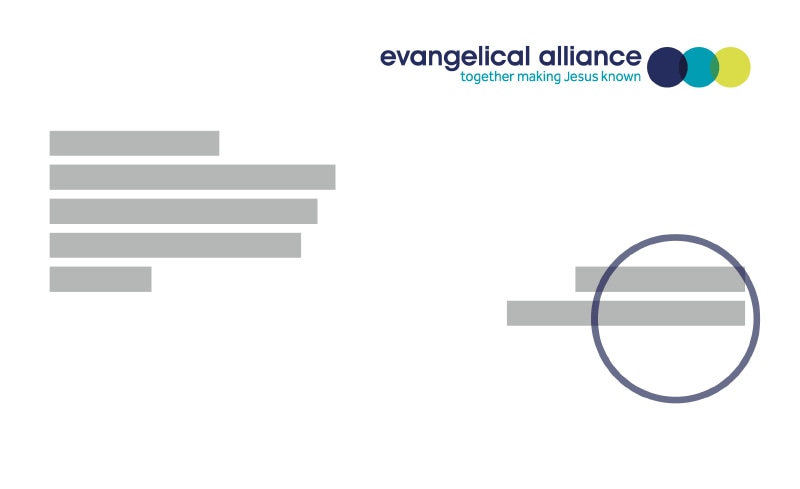I wasn’t convinced of the merits of digital church when we began our journey seven years ago. Why would anyone want to watch this relatively small church on their screens? Would it become too tempting an option for people to stay away and watch from the comfort of their own home? These concerns were real, but they were quickly overcome by stories we began to gather.
As well as providing an opportunity for ill or holidaying members of our congregation to stay connected, we noticed new people joining us. Some were exploring faith, intrigued enough to click on a link and watch a service but possibly not intrigued enough to visit a service in person. We began to make connections with them and had the joy of leading many to Jesus. We also noticed we were attracting housebound believers. I’m sure our lockdown experience has enabled us to have a greater understanding of how it must feel to be unable to attend church services, but there have been a significant number of people who have been living with this reality for years, and those who found us were expressing a deep gratitude.
For some people this ministry was proving to be a lifeline and to others it was a stepping stone on their faith journey. We noticed that many who visited our building for the first time had engaged with us online and felt like they knew us. It became clear that our welcome mat was not at our front door but theirs. We began to dream how we could use this in a more intentional and missional way and proceeded to leaflet every home in the city with an invitation to join us online. We began to use sponsored ads on social media and also regularly encouraged our members to invite their friends and family to visit online. We noticed that people who watched us two/three times online were likely to visit us in person, so it made sense to encourage them to begin their journey via the online services.
The church experienced significant growth over the following years, and I’m convinced our online ministry was a key catalyst. As we became more confident in its fruitfulness we invested more in equipment, created a suitable studio space and trained up more volunteers. There is much we still want to improve and add, but we keep doing so step by step. We also began to experiment with online small groups, prayer meetings, use of video calls for team meetings, and leading countywide and national prayer gatherings online. We love in-person gatherings but began to see lots of wins for complementing these with online options.
So, by the time lockdown kicked in, we were in the fortunate position of having much already in place and were therefore privileged to assist hundreds of churches in developing their new online adventures. But we have still been learning so much ourselves during these past six months and are really excited about taking these lessons forward in the months and years ahead. Here are five key lessons we have learnt and are learning.
1. Going live creates connection
A friend was telling me how many retakes he often does to perfect his sermon for a pre-recorded online church service. I encouraged him to remove that option: “Go live,” I said. “Make it real.” We’ve had people move with their families from other nations to join us after engaging with us online. I asked one of these families, “What was it that you found engaging about our church online?” Their answer was, “It wasn’t all perfect and polished – it felt real.” It’s humbling. I would love everything to be perfect, but when we edit our imperfections out of the final mix we edit something of our character. We also love to create 360 circles of communication in our broadcasts. We ask questions like, where are you watching from? What is God saying to you? How can we pray for you? Answers are sent in via our chat rooms, and they are then interacted with by the person on camera to create a live connection.
2. Many people explore online
We ran four Alpha courses during the lockdown. Many who joined us seemed ‘further back’ on a faith journey than the in-person courses we’ve run in the past, and it has been a joy to establish these new relationships and see a number become Christians. One such person went through the online Alpha course, followed it up with our next steps foundation course and then applied for membership. The first time I met him in person was in a socially distanced queue of volunteers unloading seven-tonnes of food for a social relief programme we run. This was his first time meeting us in person and his first time in the church building, but we felt like we knew him. He is now involved in our daily Bible reading plans, our daily discipleship rhythms, and has joined our camera team.
3. Faithfulness beats viewing figures
At the end of our online broadcasts I have little idea whether it went well or not. In the absence of the measures we learn to use when meeting in buildings, we are often only left with the cold statistics of the viewing numbers. There have been weeks these numbers have shrunk by hundreds and our team has held soul searching post-mortems to work out why. Some of these have given us helpful learning opportunities, but some of them have been unnecessarily depressing. I’m normally full of expectation and believe the best, but there have been moments when I’ve thought, what is the point? Here is the point: we faithfully serve the Lord!
4. Succinct communication strengthens services
Pre-lockdown our services were one hour and 45 minutes. We are about to reopen our building again for Sunday services and they will now be no longer than one hour each. We have had to cut the waffle, remove the repetition, tighten the transitions, and concentrate the preaching. We have always worked to improve our preaching communication, but the lockdown has taught us we can say in 20 minutes what used to take 40 minutes. It requires more work, clear focus and discipline, but it is possible – and given people’s limited attention span, it has a greater chance of finding attentiveness in the listener.
5. Developing community rhythms helps
I see the importance of community in the process of making disciples in the Book of Acts. The early church introduced rhythms, values and practices as a community and did them regularly together. I’m more excited about our developing daily rhythms than I am about our Sunday livestreams. Each morning many of our community join us for live rhythm broadcasts and activities. Each day we share communion together, take five minutes to invite the Holy Spirit to fill us, and share Bible reading plans on YouVersion. We have also started experimenting with interjecting thanksgiving moments on our social media feeds and broadcasting breaking prayer items in response to big news items. Our desire is to fuel a Christ-centred community who are helping one another grow closer in their relationship with the Lord. We regularly hear testimonies from both new and longstanding Christians who are growing in intimacy with the Lord as these rhythms provide the daily backing track for our lives.
A different model
During the early days of internet shopping, when asked in an interview why they had enjoyed such a successful year, the national retailer replied, “We have embraced the click and the brick.” It’s a model virtually all high street retailers have now adopted where a customer can order online and pick up in store. I believe the church will need to now fully adopt the ‘click and the brick’ model. Choose one and we will miss out, but choose both and I believe we will step into a bountiful harvest as we walk through these unusual days.
"We’ve had people move with their families from other nations to join us after engaging with us online. I asked one of these families, “What was it that you found engaging about our church online?” Their answer was, “It wasn’t all perfect and polished – it felt real.”"



